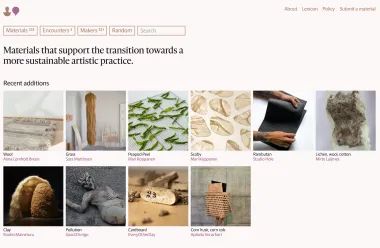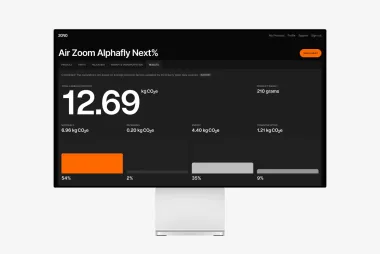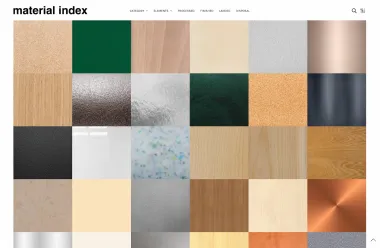Time to take action
By 2030 we must reduce our global emissions by more than half to avoid irreversible
climate change. That is just a few short years to achieve the significant shifts
required. The exhibition 1kg CO2e is here to inspire a transformation in how furniture
is made - demonstrating the quantity of different materials we can get for 1kg CO2e.
It’s time to choose wisely
The exhibition
The 1kg CO2e exhibition was first displayed at the Stockholm Furniture Fair 2023. On display were 40+ materials - both traditional materials, and new climate innovative ones. Several panel discussions were also held and the exhibit became a venue for exciting conversations and networking. Between March and April 2023, the exhibition will be on display at Form/Design Center in Malmö.



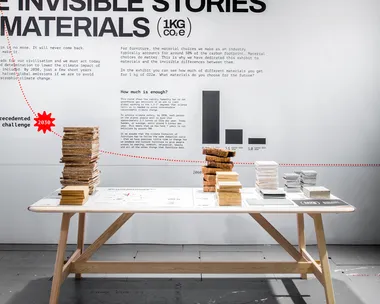

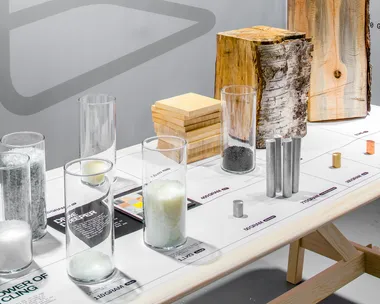
Designing furniture for the climate
Choosing recycled, reused and low impact materials will not be enough to save our climate, the furniture industry has to do more. Furniture has to be designed from a full life cycle perspective, using minimal material and making use of all waste- and side-streams. Furniture also has to become even longer-lasting and easy to maintain, repair and recondition.
Beyond this, the industry needs to nurture long-lasting interior relationships and stop manufacturing short-lived trends. New business models and partnerships for pre-loved furniture are needed, and repair and reconditioning services should become more widely available.
Dive deeper
The exhibit is a starting point for anyone interested in the climate impact of materials, and we encourage everyone to dive deeper. Spend time online and visit sites like the Future Materials Bank and Doconomy’s 2030 Calculator.
Our friends at Form Us With Love are working together with Christian Fiebig to develop an open tool called Material Index to make material decisions easier.
A note on
methodology
The climate impact data used in the exhibition comes from Doconomy, a company that develops digital tools to help us all live in a more sustainable way.
The carbon footprint of the different materials has been calculated as carbon dioxide equivalents (CO2e). The calculations include all greenhouse gas emissions covering a cradle-to-gate perspective, meaning that all emissions from the extraction of raw materials, transport and manufacturing until the material has been produced in the factory are included.
The sources used includes Doconomy’s own 2030 Calculator, databases such as Ecoinvent, environmental product declarations (EPD) and academic studies. For most of the materials the emissions data reflect industry average values. However, in a few cases where industry data isn’t available, we’ve used company specific data (with third party verification) and data from academic institutions. In a number of cases we’ve triangulated different sources to come up with a final number.
It should be noted that significant variations in emission intensities can exists within the same material group depending on for example manufacturing methods, geography and assumptions made during calculation. In light of this, it is best to view the numbers in the exhibition as giving you an understanding of the relative size of the carbon footprint of different materials - i.e., which materials you get a lot of for 1kg of CO2e, and which ones you get less of. It also means that this is not only about choosing better materials, but also about choosing better suppliers from a sustainability perspective.
About
The 1kg CO2e exhibit is the brain child of furniture designer Emma Olbers
and the result of a creative partnership with
SALLY
- a future manifestation lab at the design and innovation agency
EY Doberman.
A big thank you is extended to EY, Doconomy, Polestar, Nrep, Ludvig Svensson, Tre Sekel
and everyone who has passionately helped this exhibition come about. Thank you Andy Liffner
for the photography.
Emma Olbers
Furniture designer & sustainability strategist
Sally
Future manifestation lab at
EY Doberman
Supported by


